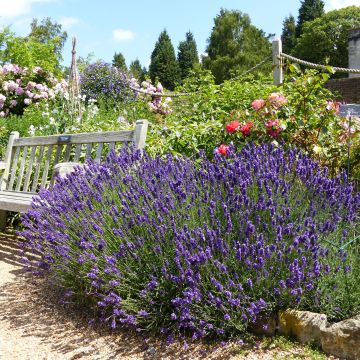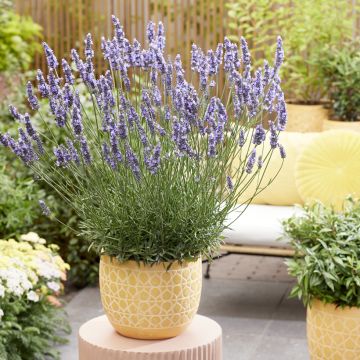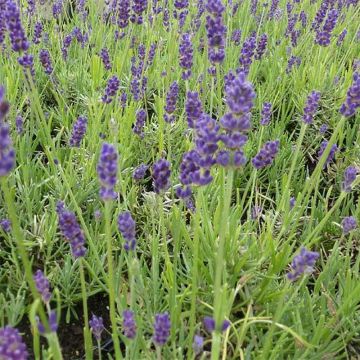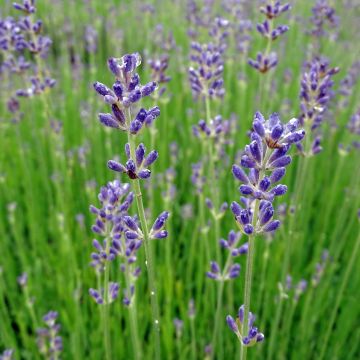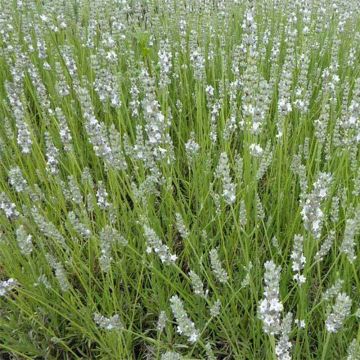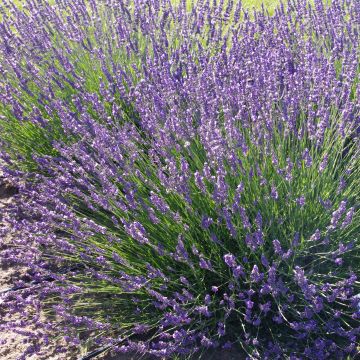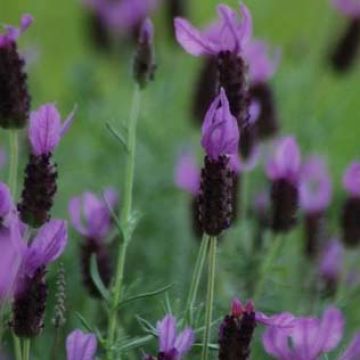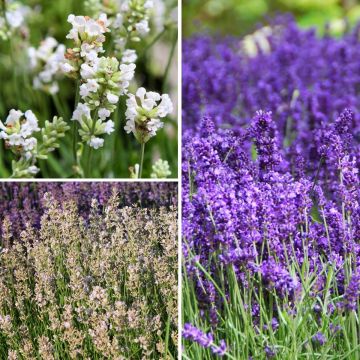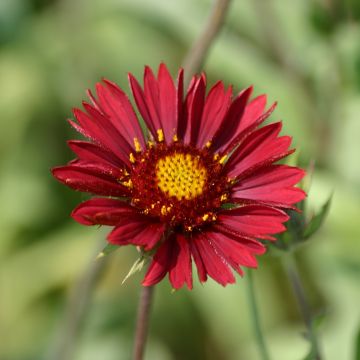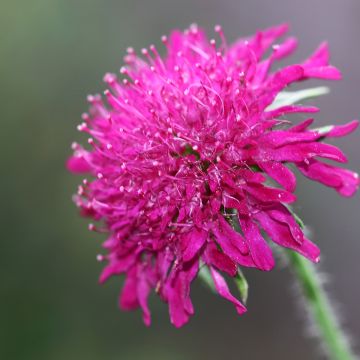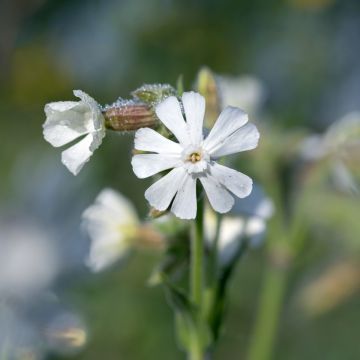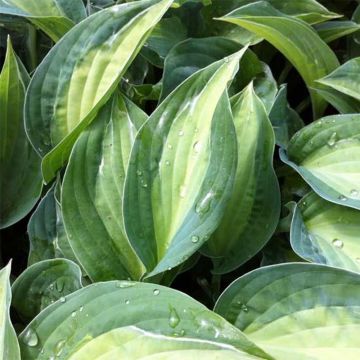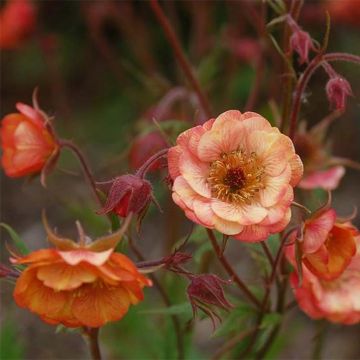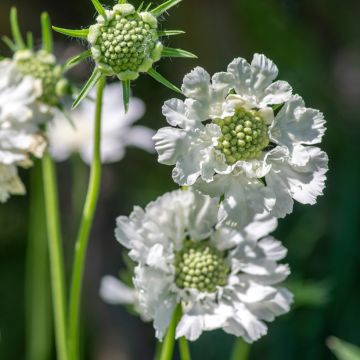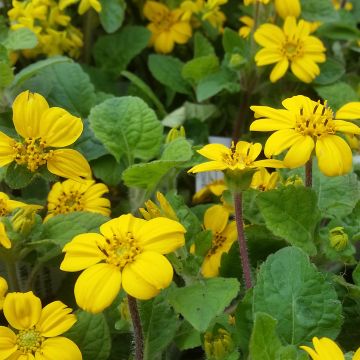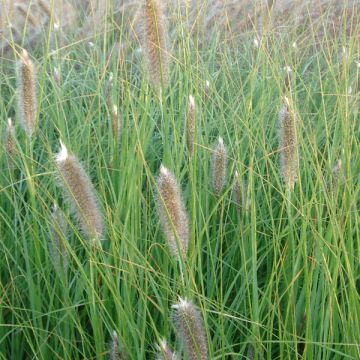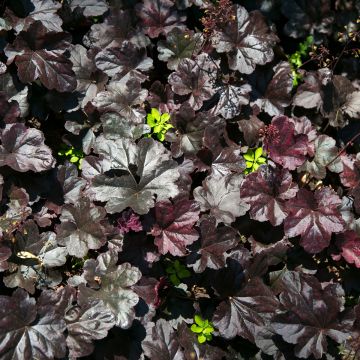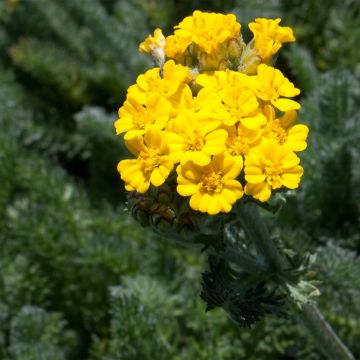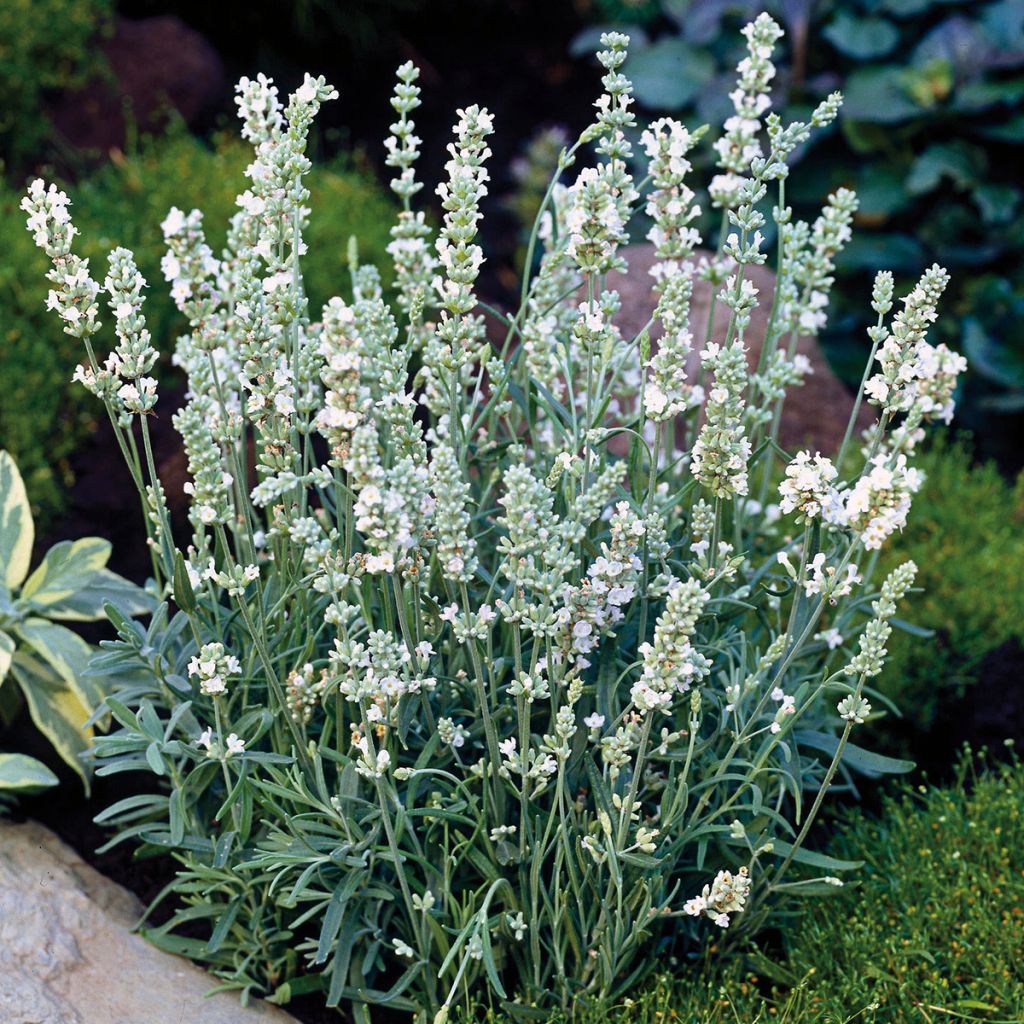

Lavandula angustifolia Montagnac White - True Lavender
Lavandula angustifolia Montagnac White - True Lavender
Lavandula angustifolia Montagnac White
True Lavender, English lavender
This item cannot be shipped to the selected country
Delivery charge from €5.90
Delivery charge from €5.90
Delivery to Corse prohibited
More information
Schedule delivery date,
and select date in basket
This plant carries a 12 months recovery warranty
More information
We guarantee the quality of our plants for a full growing cycle, and will replace at our expense any plant that fails to recover under normal climatic and planting conditions.
From €5.90 for pickup delivery and €6.90 for home delivery
Express home delivery from €8.90.
From €5.90 for pickup delivery and €6.90 for home delivery
Express home delivery from €8.90.
Delivery to Corse prohibited: UE law prohibits the import of this plant from mainland France to Corse as part of the fight against Xylella fastidiosa. Please accept our sincere apologies.
More information
Does this plant fit my garden?
Set up your Plantfit profile →
Description
Lavandula angustifolia 'Montagnac White' is a selection of English Lavender with white flowers, which is particularly compact and floriferous. The plant is capable of flowering as early as June. Its flower spikes are wide, highly decorative, in harmony with its grey- silver summer foliage. Even in the middle of winter, its rounded shape and slightly grey aromatic foliage will brighten up the garden!
Lavandula angustifolia 'Montagnac White' belongs to the Lamiaceae family. It is a recent horticultural creation whose wild ancestor originates from the Mediterranean regions of southern Europe. This lavender variety forms a bush with a woody base, 30-35 cm (12-14in) in all directions, with an upright, very compact, dense and harmonious habit. Its evergreen foliage in winter consists of narrow, aromatic leaves with a beautiful green-silver colour. From June to September, this lavender is covered with a multitude of fragrant and melliferous flowers, grouped in short and wide cylindrical spikes.
Lavender 'Montagnac White', like most other lavenders, needs to be planted in full sun in a very well-drained, even dry and rocky soil. Under these conditions, its foliage will be more silver and its flowers will exude a more intense fragrance. As an ornamental and Mediterranean plant par excellence, lavender can be used in flower beds, borders, rockeries, pots, or by the seaside. It can be associated with low-growing grasses that prefer dry soil, which, with their tousled habit, will contrast with its rounded shape and create a graphic scene. It also works wonders at the base of border roses. In a Mediterranean garden, it is perfect with shrubs such as cistus or shrub sage. You can also plant it to create beautiful containers to be placed on the patio or balcony.
Properties: Lavender is a highly melliferous plant, contributing to the conservation of bees: the nectar of its flowers attracts bees, making some of the best honey.
Lavandula angustifolia is a medicinal plant, whose therapeutic properties were once widely used: its essential oil has antiseptic, antispasmodic, healing, purifying, diuretic properties, and more.
Report an error about the product description
Flowering
Foliage
Plant habit
Botanical data
Lavandula
angustifolia
Montagnac White
Lamiaceae
True Lavender, English lavender
Cultivar or hybrid
Other Lavendula - Lavender
Planting and care
Hardy up to -10°C (14°F), Lavender 'Montagnac White' needs to be planted in a warm and sunny location, in a light, rocky, well-drained soil, even a dry soil in summer. It does not tolerate clay soils and excessive water. If this is the case, it will be necessary to lighten the soil by adding sand and gravel. Llavandula angustifolia should be pruned every year, just after flowering, by removing faded inflorescences. A second pruning should be done in early spring, by cutting back the plant by one third (without going to the old wood), to maintain a beautiful compact, rounded shape, and its floriferous qualities.
Lavenders require very little water. Watering will only be necessary in the first year of planting. When pruning after flowering, do not throw away the faded inflorescences, but collect them to make sachets that will wonderfully perfume wardrobes, and also make excellent moth repellents. For dried bouquets, harvest lavender flowers when they have just bloomed and let them dry in a dry and ventilated place, upside down.
Planting period
Intended location
Care
This item has not been reviewed yet - be the first to leave a review about it.
Summer flowering perennials
Haven't found what you were looking for?
Hardiness is the lowest winter temperature a plant can endure without suffering serious damage or even dying. However, hardiness is affected by location (a sheltered area, such as a patio), protection (winter cover) and soil type (hardiness is improved by well-drained soil).

Photo Sharing Terms & Conditions
In order to encourage gardeners to interact and share their experiences, Promesse de fleurs offers various media enabling content to be uploaded onto its Site - in particular via the ‘Photo sharing’ module.
The User agrees to refrain from:
- Posting any content that is illegal, prejudicial, insulting, racist, inciteful to hatred, revisionist, contrary to public decency, that infringes on privacy or on the privacy rights of third parties, in particular the publicity rights of persons and goods, intellectual property rights, or the right to privacy.
- Submitting content on behalf of a third party;
- Impersonate the identity of a third party and/or publish any personal information about a third party;
In general, the User undertakes to refrain from any unethical behaviour.
All Content (in particular text, comments, files, images, photos, videos, creative works, etc.), which may be subject to property or intellectual property rights, image or other private rights, shall remain the property of the User, subject to the limited rights granted by the terms of the licence granted by Promesse de fleurs as stated below. Users are at liberty to publish or not to publish such Content on the Site, notably via the ‘Photo Sharing’ facility, and accept that this Content shall be made public and freely accessible, notably on the Internet.
Users further acknowledge, undertake to have ,and guarantee that they hold all necessary rights and permissions to publish such material on the Site, in particular with regard to the legislation in force pertaining to any privacy, property, intellectual property, image, or contractual rights, or rights of any other nature. By publishing such Content on the Site, Users acknowledge accepting full liability as publishers of the Content within the meaning of the law, and grant Promesse de fleurs, free of charge, an inclusive, worldwide licence for the said Content for the entire duration of its publication, including all reproduction, representation, up/downloading, displaying, performing, transmission, and storage rights.
Users also grant permission for their name to be linked to the Content and accept that this link may not always be made available.
By engaging in posting material, Users consent to their Content becoming automatically accessible on the Internet, in particular on other sites and/or blogs and/or web pages of the Promesse de fleurs site, including in particular social pages and the Promesse de fleurs catalogue.
Users may secure the removal of entrusted content free of charge by issuing a simple request via our contact form.
The flowering period indicated on our website applies to countries and regions located in USDA zone 8 (France, the United Kingdom, Ireland, the Netherlands, etc.)
It will vary according to where you live:
- In zones 9 to 10 (Italy, Spain, Greece, etc.), flowering will occur about 2 to 4 weeks earlier.
- In zones 6 to 7 (Germany, Poland, Slovenia, and lower mountainous regions), flowering will be delayed by 2 to 3 weeks.
- In zone 5 (Central Europe, Scandinavia), blooming will be delayed by 3 to 5 weeks.
In temperate climates, pruning of spring-flowering shrubs (forsythia, spireas, etc.) should be done just after flowering.
Pruning of summer-flowering shrubs (Indian Lilac, Perovskia, etc.) can be done in winter or spring.
In cold regions as well as with frost-sensitive plants, avoid pruning too early when severe frosts may still occur.
The planting period indicated on our website applies to countries and regions located in USDA zone 8 (France, United Kingdom, Ireland, Netherlands).
It will vary according to where you live:
- In Mediterranean zones (Marseille, Madrid, Milan, etc.), autumn and winter are the best planting periods.
- In continental zones (Strasbourg, Munich, Vienna, etc.), delay planting by 2 to 3 weeks in spring and bring it forward by 2 to 4 weeks in autumn.
- In mountainous regions (the Alps, Pyrenees, Carpathians, etc.), it is best to plant in late spring (May-June) or late summer (August-September).
The harvesting period indicated on our website applies to countries and regions in USDA zone 8 (France, England, Ireland, the Netherlands).
In colder areas (Scandinavia, Poland, Austria...) fruit and vegetable harvests are likely to be delayed by 3-4 weeks.
In warmer areas (Italy, Spain, Greece, etc.), harvesting will probably take place earlier, depending on weather conditions.
The sowing periods indicated on our website apply to countries and regions within USDA Zone 8 (France, UK, Ireland, Netherlands).
In colder areas (Scandinavia, Poland, Austria...), delay any outdoor sowing by 3-4 weeks, or sow under glass.
In warmer climes (Italy, Spain, Greece, etc.), bring outdoor sowing forward by a few weeks.

































